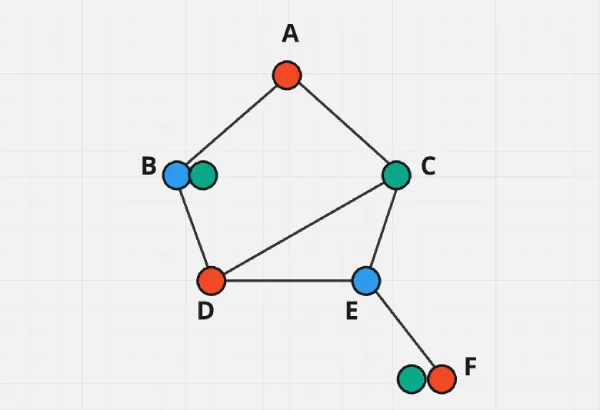Think of Artificial Intelligence not as a machine with blinking lights but as a meticulous artist one who paints within invisible boundaries. A set of unseen rules guides each stroke, and the masterpiece emerges only when every colour, shape, and proportion aligns perfectly. This is the world of Constraint Satisfaction Problems (CSPs) a framework where solutions don’t emerge from brute force but from balance, logic, and clever navigation through restrictions.
Whether it’s solving a Sudoku puzzle, scheduling flights, or assigning resources in a cloud network, CSPs transform chaotic possibilities into structured clarity. And for students exploring advanced logic in an AI course in Delhi, understanding CSPs offers a practical gateway into how machines “think” without breaking their boundaries.
The Puzzle Beneath the Surface
Imagine you’re handed a Sudoku grid partially filled, yet waiting for completion. Each number you place must obey three golden rules: no repetition in any row, column, or box. That’s a constraint. The puzzle itself? A problem space waiting for harmony. This same logic underpins countless AI systems. From assigning tasks to servers in data centres to configuring sensors in autonomous cars, every action must satisfy predefined rules.
The beauty of CSPs lies in their universality. They represent problems as sets of variables, each with possible values, and constraints that dictate acceptable combinations. The AI doesn’t guess wildly it prunes impossible paths, narrows down viable choices, and zeroes in on the most harmonious configuration. Learners mastering this concept in an AI course in Delhi often find it to be the point where abstract theory transforms into elegant practicality.
Variables, Values, and the Invisible Web
At the heart of every CSP lies a network of interdependent decisions. Consider planning a wedding. The venue, date, caterer, and guest list all depend on each other. If one venue is available only on Saturdays, but the caterer can’t serve on weekends, a conflict arises. Solving such a puzzle requires understanding the interplay between constraints what can coexist and what cannot.
CSP algorithms work like expert negotiators, striking agreements between competing conditions. Techniques like backtracking, forward checking, and constraint propagation ensure that each decision paves the way for the next. It’s not brute force but a refined dialogue between logic and limitation. The AI becomes a patient diplomat, seeking consensus across a web of dependencies, until every variable finds its rightful place.
The Power of Pruning: Efficiency Over Exhaustion
A naïve approach to solving constraints would try every possible combination an impossible feat as complexity grows. Instead, AI borrows wisdom from the gardener: prune what cannot bloom. Algorithms eliminate infeasible paths early, trimming the search tree before it becomes unmanageable.
This idea is beautifully embodied in algorithms like AC-3 (Arc Consistency) or backtracking search. They continuously refine the search space by enforcing consistency ensuring that for every variable, at least one valid value exists under the given constraints. What emerges is not just a solution but an efficient path to reach it. This balance between exploration and elimination mirrors the very philosophy of intelligent problem-solving: think less, but think smarter.
CSPs in the Real World: From Games to Global Systems
CSPs aren’t confined to academic puzzles they shape the real world in invisible ways. When you book a flight, AI systems ensure that aircraft assignments, crew schedules, and airport gates align without conflict. When autonomous vehicles navigate traffic, they constantly evaluate constraints of speed, distance, and timing. Even logistics companies rely on CSP-based scheduling to deliver packages with clockwork precision.
Beyond automation, CSP frameworks empower researchers to design sustainable cities, efficient energy grids, and adaptive learning systems. In AI-driven healthcare, CSP models help match patients to optimal treatment plans while respecting medical, logistical, and ethical boundaries. Each application underscores one truth intelligence thrives not in freedom, but within meaningful limits.
The Human Lesson in Machine Logic
There’s something profoundly human about CSPs. They remind us that creativity flourishes within constraints. Great artists work within frames, composers within keys, and engineers within budgets. Similarly, machines learn to be “intelligent” not by ignoring rules but by mastering them.
Understanding CSPs encourages learners to think algorithmically about everyday challenges: balancing time, resources, and goals. This mindset, cultivated through structured learning, transforms how one perceives both AI and problem-solving in general. For professionals studying in an AI course in Delhi, this discipline becomes more than just a topic it’s a foundation for thinking systematically, efficiently, and ethically in an increasingly automated world.
Conclusion
Constraint Satisfaction Problems are where logic meets limitation, and creativity meets control. They showcase AI’s ability to operate like a grand strategist finding order in complexity and solutions in restriction. Whether it’s Sudoku grids or global logistics, CSPs teach that intelligence isn’t about infinite options but about choosing wisely within boundaries.
As we step further into an age of intelligent systems, the elegance of CSPs continues to shape how machines reason and how humans design them. In mastering these concepts, we don’t just learn about algorithms we know the art of disciplined problem-solving, where success is not found in defying constraints but in working beautifully within them.







